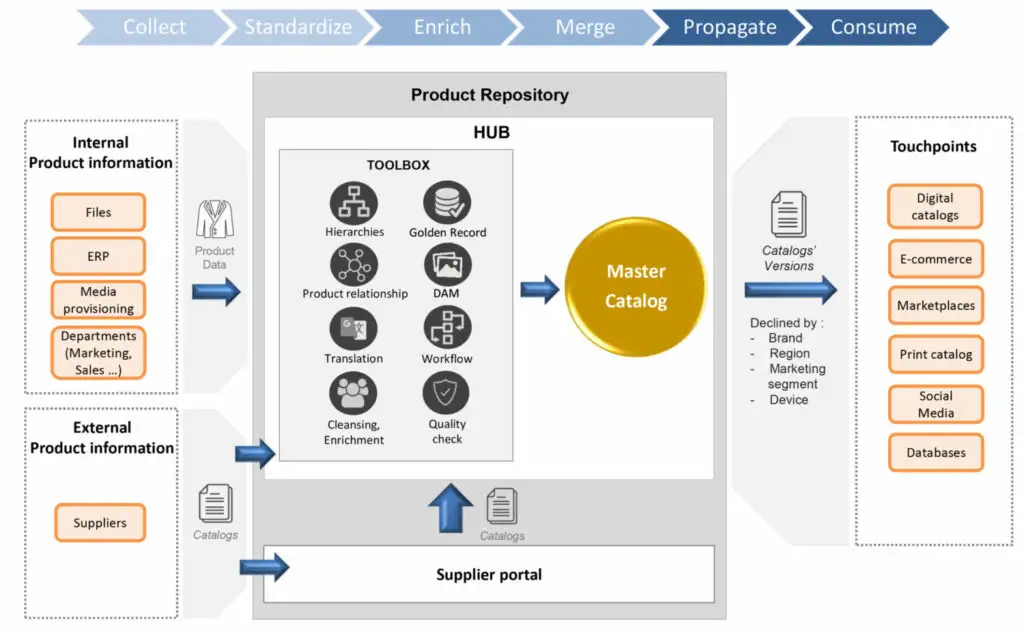
PIM is a solution that supports the entire life cycle of product information from conception to sale, building up a corporate catalog.
No business application (ERP, E-commerce) can lead by itself the product catalog: fragmented data must be reunified, enriched, and shared in a master catalog. Governance must ensure quality and completeness at all stages, whatever the type of data: codifications, digital assets, recommendations… reducing significatively Time to Market.
Upstream, data are fueled from supplier catalogs, through a supplier portal with extensive functionalities (data imports, validation processes, enrichments, …). Downstream, the master catalog is spread on different sales channels, both internal and external: print and digital catalogs, e-commerce website, marketplaces,…
Core functionalities are about integration of heterogeneous data, ensuring data quality and deduplication within a flexible data model offering advanced classifications and hierarchies. It streamlines stakeholders’ contributions to enrich data through custom workflows and at the end manage data propagation.
In terms of business benefits, PIM brings you additional touchpoints and a seamless customer experience, leading to increasing conversion rates, improving customer satisfaction and finally outstripping your competitors.

Your business is about selling products that you manufacture. With the PIM solution you save time dedicated to generating your product catalog while processing data quality:
You are a retailer active on every existing channel: